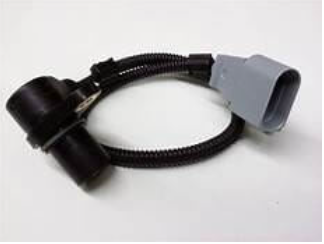Recently, self-driving cars are a hot topic, and related reports are not uncommon. Some companies like BMW, Benz had even launched their original autonomous vehicles models. For different types and uses of cars, there are specifical sensors such as KIA Auto SPEED sensor, VW Oxygen Sensor and TOYOTA Air Flow Sensor. Self-driving does not seem to be a fictional concept anymore for us.
For cars to realize autonomous driving, the first thing to solve is the problem of improving safety. It is a big part that need to be invested in during the process of R&D. The car need to be equipped with “eyes”with a good vision and a brilliant “brain” to guarantee safety and automation. And the “eyes” are all types of sensors and induction faucet measuring equipment.
Type of sensors in autonomous vehicles
The sensors are mainly Camera, Lidar, Radar, IMU and Ultrasonic radar in autonomous sensors. Next , let’s introduce these sensors respectively.

Camera
Camera is one of the most intuitive and most popular sensor types, it is not just applied in autonomous vehicles. The popularity of camera and others’ applications enable researchers to provide multiple assistive technologies. In turn, there assistive technologies have been perfected in other fields and practices of the markets. Both autonomous and non-autonomous cars use multiple cameras, including front, rear, side and wide range. Thus, camera technology has been applied well in automobile industry. The strengths of camera which is stored by specialized camera shoulder bag are low cost and the this technology is mature, for there are many people who develop algorithms with cameras. The weakness are that the camera is limited by ambient light to a relative great extent and it is very difficult to get precise three-dimensional information(Monocular cameras are almost impossible, and binocular or three-ocular cameras have also been proposed).
Lidar
Compared with camera, Lidar is more important for autonomous cars. Laser radar is also known as optical radar, shortly called Lidar. The laser radar is to achieve the detection of the target by emitting laser beam, its detection accuracy is higher, the detection range is wider. However, the disadvantages of lidar are also obvious. Lidar is more susceptible to the interference of rain and snow haze in the air, and its high cost is also the main reason restricting its application.
Personally, the most important reason why lidar is regarded as one of the most important sensors for autonomous vehicles is its advantage in building three-dimensional environment models. The laser radar transmits multi-threaded laser beams to collect environmental information at different heights, and through its internal rotating device, the information is collected in a range of 360 degrees in the horizontal direction. A signal-receiving device on lidar can pick up laser beams reflected from a target and turn them into point clouds. By processing point cloud data, it can complete the classification and identification of the surrounding environment information. However, everything has its pros and cons. The more multi-threaded lidar can detect the larger the scope of the environment, the larger the amount of point cloud data it receives, and the higher the requirements for hardware fitting data processing capability. In addition, as the rotating device inside the lidar needs to constantly rotate and emit laser beams, the hardware has high quality salmosan azamethiphos requirements for wear resistance and accuracy, which also leads to the high cost of lidar and thus increases the price of autonomous vehicles. However, as the technology develops, it is believed that the cost and size of lidar will be greatly reduced, while the performance will be greatly improved.
Ultrasonic radar
Ultrasonic radar is a under-estimated sensor. There are two common types of ultrasonic radar. The first is installed on the front and rear bumper of the car, which is used to measure the rear and rear obstacles of the car. This radar is called UPA in the industry. The second type, known in the industry as APA, is an ultrasonic radar that is installed on the side of a car to measure the distance to obstacles on the side. Both detection range and area of UPA and APA are different. The detection distance of UPA is generally between 15-250cm, mainly used for obstacles located in front and back of cars, that of APA is around 30-500cm. Detection range of APA is wider, and cost is higher.
The reason why I mentioned that ultrasonic radar is an under-estimated sensor is that it can do many others thing except detecting obstacles such as parking lots detection and high speed lateral assist.
Importance of sensors in autonomous vehicles
With the acceleration of the development of cutting-edge technologies such as autonomous driving, the importance and penetration rate of sensors have also been continuously improved. The vast majority of self-driving cars need to rely on the use of different types of sensors for various image recognition, which is the core foundation for ensuring the operation and safety of the car. Therefore, in the current rapid development of the field of autonomous driving, the importance of sensors has become increasingly prominent. There is no doubt that autonomous driving will be one of the core industries in the future, and its market size can be imagined. From this point of view, the future market potential of sensors will also be very huge.
Summary
We’ve known the uses and importance of various sensors for autonomous car. YASEN is an excellent supplier to provide sensors. It offer all kinds of sensors for different types of cars like KIA Auto SPEED sensor. Any interest, you can contact it.
Post time: Nov-24-2021


